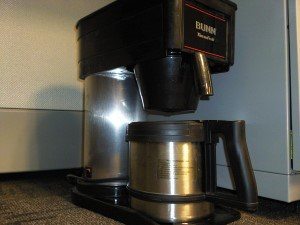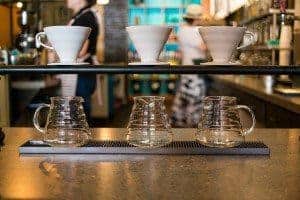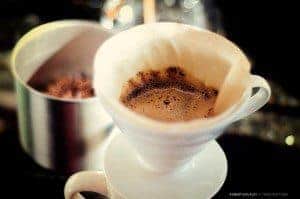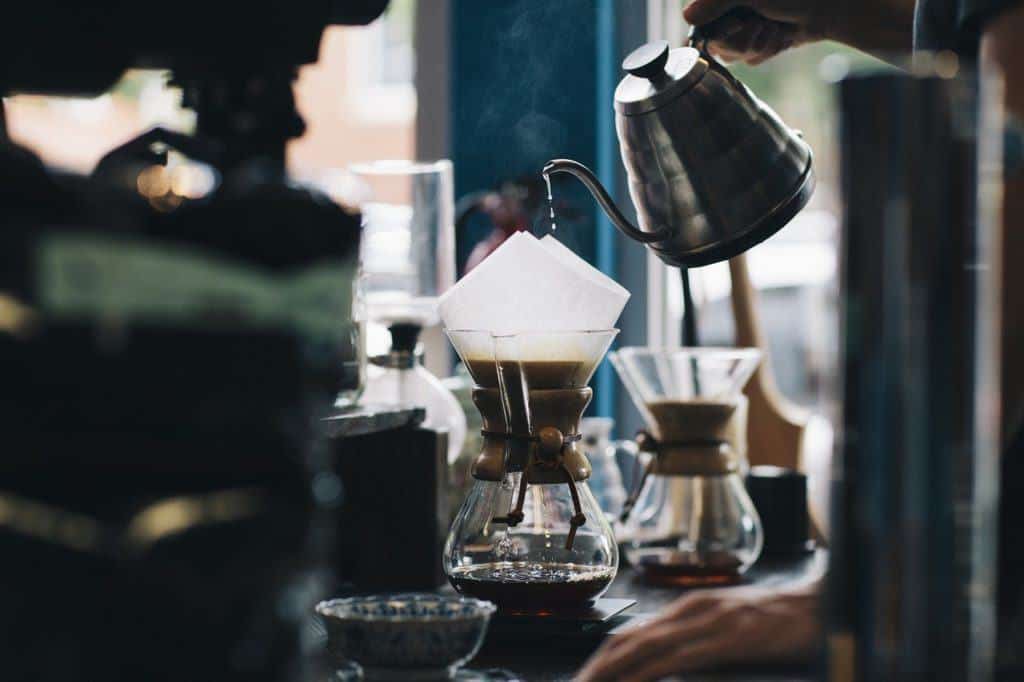Blog
Pour Over Some Happiness
Growing up in the 80s was extremely interesting. The world was much different but was on the cusp of modernizing itself. We weren’t in the Information Age yet, and computers back then for me was something to play a few square blocks put together hitting one square block towards an opponent composed of other square blocks. That video game I used to enjoy for hours on end was considered cutting-edge and a computer processing marvel.
True to the theme of an upcoming technology and a world that was so convinced that Japan, being the mecca of innovative new electronics like the Walkman, would dominate the world. It also seemed that in this “hi-tech” world (yes, that was how we spelled it back then), everyone was so obsessed with automation we all assumed that we would have robot butlers by the year 2000. Sixteen years have passed since then and I still don’t have a robot butler to tie my shoelaces. Every household chore was studied and efforts were made to make these run by machines. Those ideas turned into automatic washing machines, automatic dryer and even an automatic coffee machine.

Although invented in the 50s by a German scientist, the auto-drip coffee machine gained a surge in popularity in the 70s and 80s with the Mr. Coffee brand being a fixture in every household. Prior to these “coffeemakers”, the process of brewing was cumbersome and percolators were the best way to do so. The household coffee maker was easy, all you had to do was put water in the chamber, ground coffee in a filter, and turn it on. After you’ve taken a shower and prepared for work, you’ll have a piping hot cup of Joe waiting for you. Notice I just said piping hot and not “nice, piping hot?” Well primarily because it wasn’t that nice.
Wait now, aren’t automated things much better? Cars that have been made in robotic assembly lines are more reliable and have better designs than manually made cars. Well, while automation and computer-aided design has impacted a lot of things in the world positively, coffee making is part science and part art, where humans are still much needed to make a perfect outcome.
The problem with the automatic drip coffeemaker was the lack of control of the variables that consisted a great cup of coffee. Water temperature was not guaranteed to be at the ideal level of 205 degrees Fahrenheit as it depended just on a flowing operation resulting in cold water flowing through the filter. The auto-drip showerhead where the water comes out has a tendency to concentrate on one area causing coffee in that area to be oversaturated while the rest of the grounds are not even utilized. These factors result in a less desirable cup of coffee especially to the discerning coffee drinker.

The pour over brewing method solves all of the key shortfalls that the automatic drip coffeemaker misses out on. Unlike the French Press, drip brewing does not rely on the water coming into full contact with the coffee granules for the entire time. It constantly flows a fresh amount of hot water to continuously extract the goodness from the coffee grounds to create a fresh cup. The result is a cleaner and smoother coffee cup as compared to the French Press’ full-bodied, robust flavor. The pour over’s manual approach is the key to why the coffee comes out perfectly well compared to the automatic coffeemaker.
The pour over method is similar in principle to the automatic coffeemaker. A filter, sometimes made of paper or metal, is filled with ground coffee and hot water is poured into this, which drips extracted coffee into a mug. Unlike the French Press, the coffee grind is a notch finer than the coarse grind needed for the immersion method. To aide the brewing, pour over cones, sometimes made of glass or metal, are designed to funnel and delay the flow of hot water to ensure the perfect time is spent extracting the coffee flavor. The manual intervention needed is in pouring the water into the coffee, which is the most essential component of this brewing method.

After the grounds have been placed in the filter and has been positioned on top of the mug, the grounds need to be put through a process called wetting. This is when enough hot water is poured just to saturate the ground coffee. The reason behind this is to release the carbon dioxide molecules in the ground coffee and allow better water osmosis when the actual pour over is done. After about 30 seconds, the pour over is done beginning in the center and then a spiral motion is performed to ensure all of the grounds in the filter get some attention and love. The total extraction time for the brew takes about 3.5 to 4 minutes.
The pour over delivers a very clean and smooth-tasting coffee and connoisseurs swear by the higher level of notes the method extracts from beans with different tastes. The citrus-like taste of African beans is more evident just like the chocolate tones of beans from Venezuela are, too. A couple of things are for certain…with hard work comes a perfect product and pour over baristas aren’t about to be replaced by robots anytime soon.





